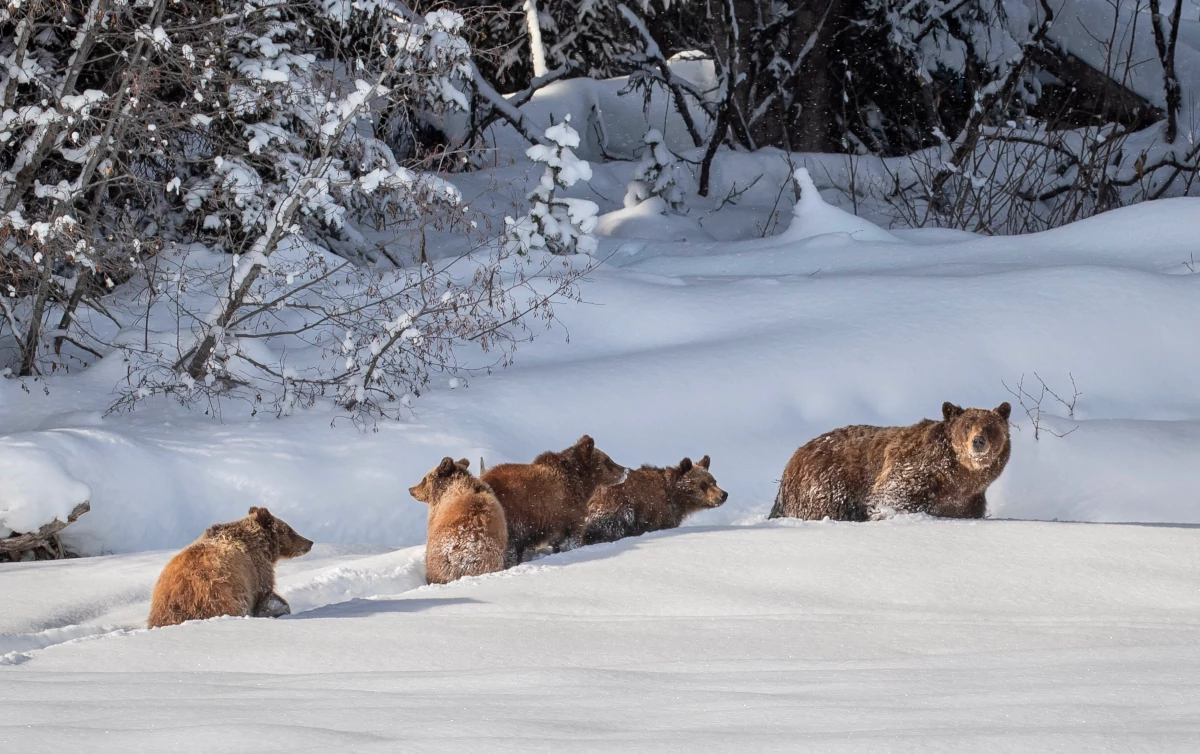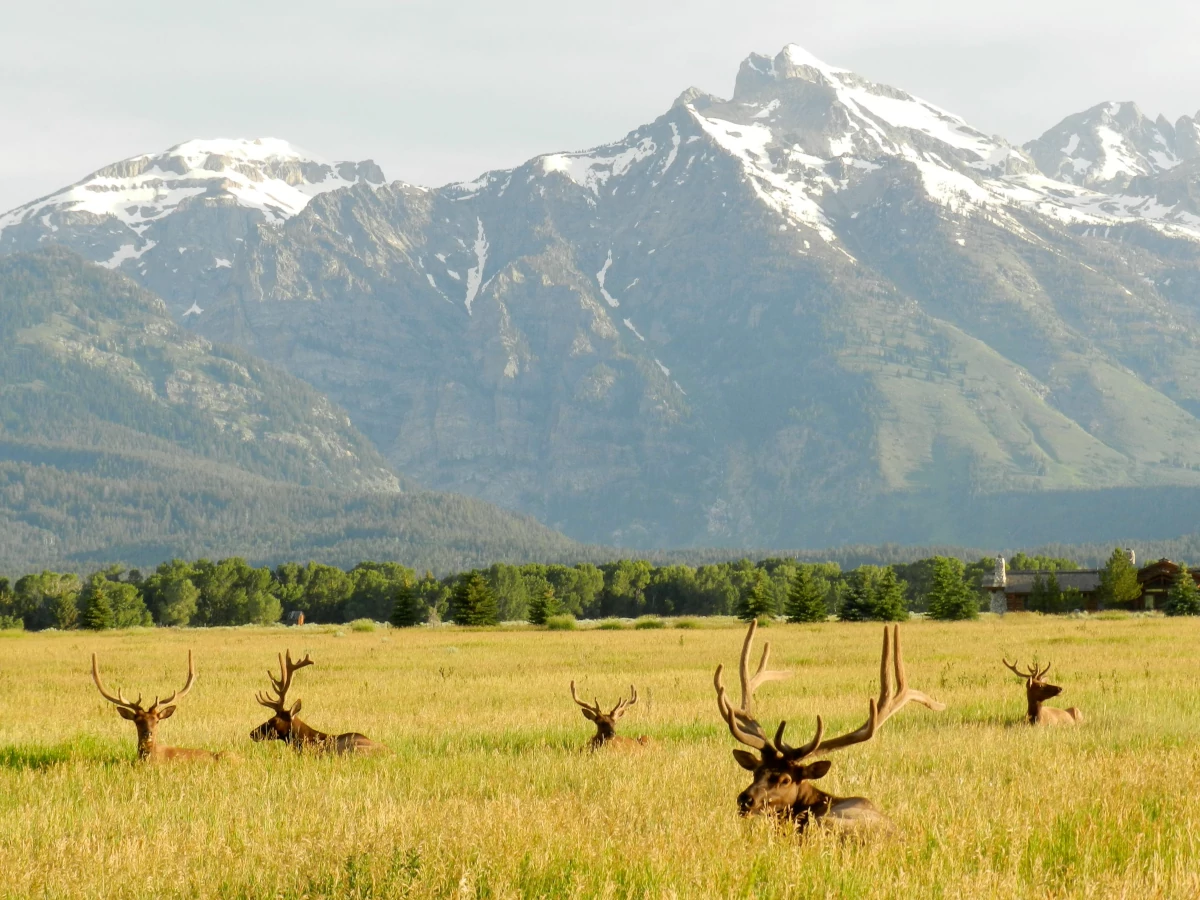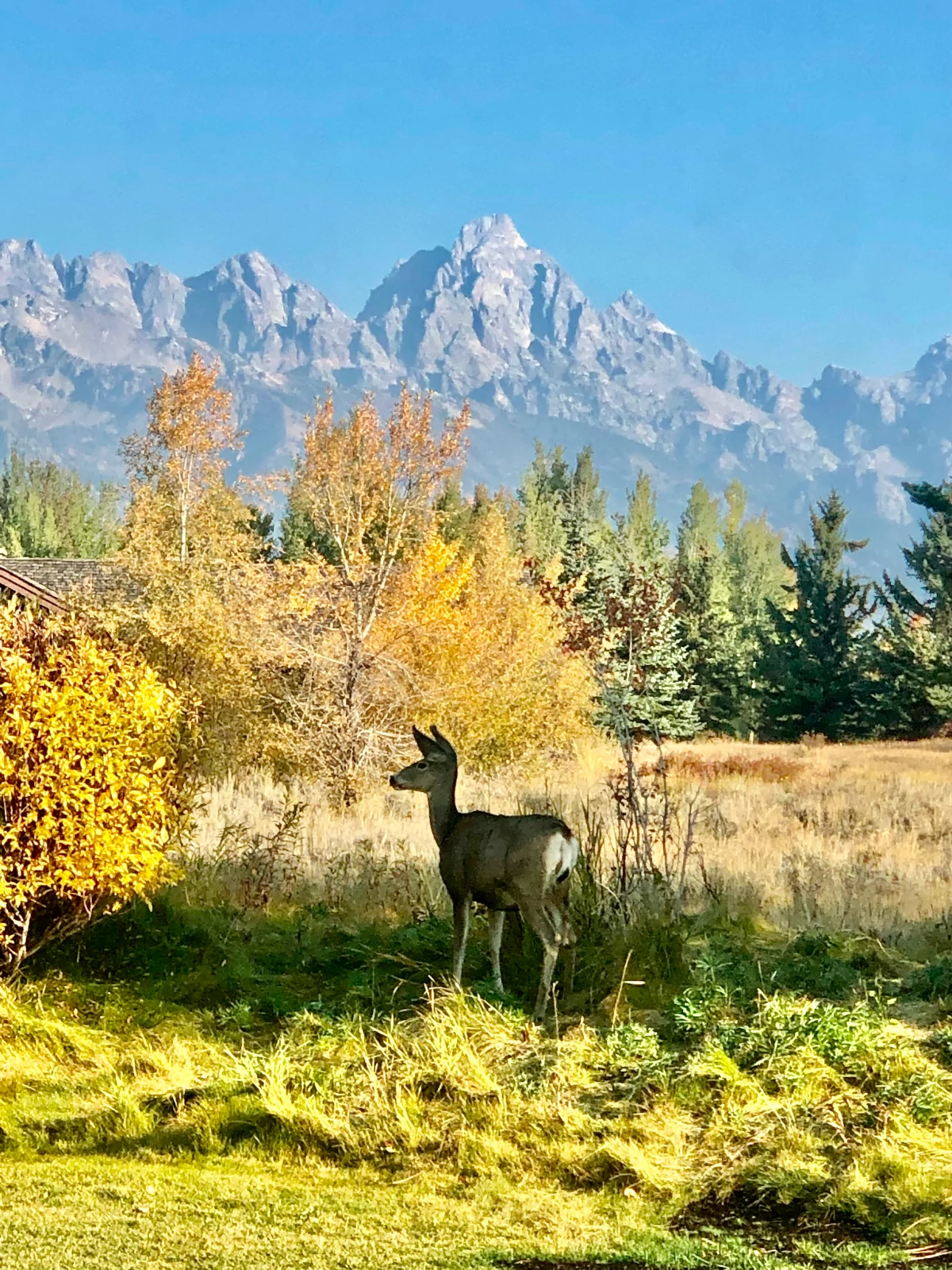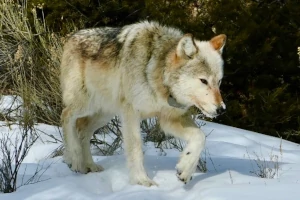
Grizzly 399

Who is 399?
Jackson Hole Grizzly Mother 399 has been touted as "the most famous bear in the world." The moniker does not pertain solely to her celebrity status, which has gone supernova in the age of social media and people becoming aware of her far beyond the Greater Yellowstone Ecosystem.
Born in 1996, 399 has been remarkable for her longevity, her visual presence along the roadsides of Grand Teton National Park, her giving birth to 17 cubs and her behavioral traits that scientists say have made her an ambassador for her species. Quite literally, owed to the way she has raised her cubs and navigated the intersection between wild country and people, 399 has helped transform the negative, fearsome image that existed in peoples' minds about grizzlies for generations. Some 30 bears were killed by Wyoming Game and Fish in 2021 and it is estimated by the Grizzly Times that another 30 were killed by poachers, auto drivers, and ranchers.
We think 399's legacy is worth both celebrating and using her story as a way to educate citizens about how we all can be better wildlife guardians and more thoughtful advocates for protection of the natural world. The purpose of this project, advanced in memory of the late conservationist Deidre Bainbridge, is to not only honor 399, but hail the important role all of us play in defending the health of the last great wildlife-rich ecosystem in the Lower 48.

Grizzly 399 taught us, by example, that sustaining a grizzly bear population in the 21st century requires giving bears a lot of protected habitat (which benefits dozens of other wildlife species), people behaving responsibly at all times, and bears having access to an abundance of natural foods as we enter an uncertain era of climate change. What has happened in the Greater Yellowstone Ecosystem with grizzly bear recovery is a miracle. In 1975, the regional population here was given federal protection under the Endangered Species Act. Grizzly numbers had fallen to as few as 300-350 and there was concern that, if bears continued to die at a faster pace than they were reproducing, they might vanish from the world-renowned region synonymous with their presence. Government agencies, citizens, and conservation organizations rallied together to prevent that from happening. Grizzly 399 is a symbol of what can be achieved when an emphasis is placed on bear conservation. Over the years, some of Grizzly 399's cubs have, in turn, grown up and given birth to their own cubs. In all, two dozen bears exist in the bloodline of 399 alone. Worthy of pause and reflection, however, is that at least half of those 399 descendants have died in various kinds of negative confrontations with humans. It's not easy being a grizzly in a human-dominated world.
Thus, the future of grizzly bear recovery in Greater Yellowstone is hardly guaranteed. This project is about continuously tackling the challenges grizzlies face and helping to win the hearts and minds of human conservationists everywhere to be advocates for their survival.
Jackson Hole Grizzly Mother 399 has been touted as "the most famous bear in the world." The moniker does not pertain solely to her celebrity status, which has gone supernova in the age of social media and people becoming aware of her far beyond the Greater Yellowstone Ecosystem.
Born in 1996, 399 has been remarkable for her longevity, her visual presence along the roadsides of Grand Teton National Park, her giving birth to 17 cubs and her behavioral traits that scientists say have made her an ambassador for her species. Quite literally, due to the way she has raised her cubs and navigated the intersection between wild country and people, 399 has helped transform the negative, fearsome image that existed in peoples' minds about grizzlies for generations. (courtesy of Todd Wilkinson)




Tips for Grizzly Safety
Courtesy of www.grizzlytimes.org
Being Safe In Bear Country
People are the primary cause of almost all grizzly bear deaths. Fortunately, most conflicts are avoidable, but only if we are mindful and take precautions. Here are some basic tips.
Watch for Sign of Bears: When visiting or recreating in grizzly country, you should be on the lookout for evidence that bears may be nearby. They are:
Store Food and Garbage Properly:
Grizzlies can easily become attracted to and even habituated seeking out livestock and bird foods, power bars, drink mix, dog food, horse pellets, and bird seed. All of our foods, our garbage, and the food we keep for domesticated animals should all be kept in secure places and away from a bear's reach.
Carry Bear Pepper Spray:
Research shows that properly used bear pepper spray provides the best defense against a grizzly attack. Unlike a gun, pepper spray does not have to be aimed precisely in order to stop a charging bear. When sprayed in the face of an aggressive bear, pepper spray causes temporary blindness, as well as choking and coughing.
Only purchase a pepper spray that is clearly labeled for deterring bear attacks and provides at least 9 ounces of spray. Be sure to carry the can in an easily accessible hip or chest holster. In your tent, keep spray readily available next to your flashlight. Spray should be tested once a year; do not spray in or near your camping area, as it may actually attract curious bears. In the event of a bear encounter:
Once the animal has retreated or is busy cleaning itself, leave the area as quickly as possible (don't run) or go to an immediate area of safety such as a car, tree or building. Do not chase or pursue the animal.
Take Extra Precautions in Grizzly Country
If You Encounter a Bear
Practical Tips for Homeowners
Want to help grizzly bears but don't know how? Start HERE with some help from our friends Louisa Willcox and David Mattson at the Grizzly Times.